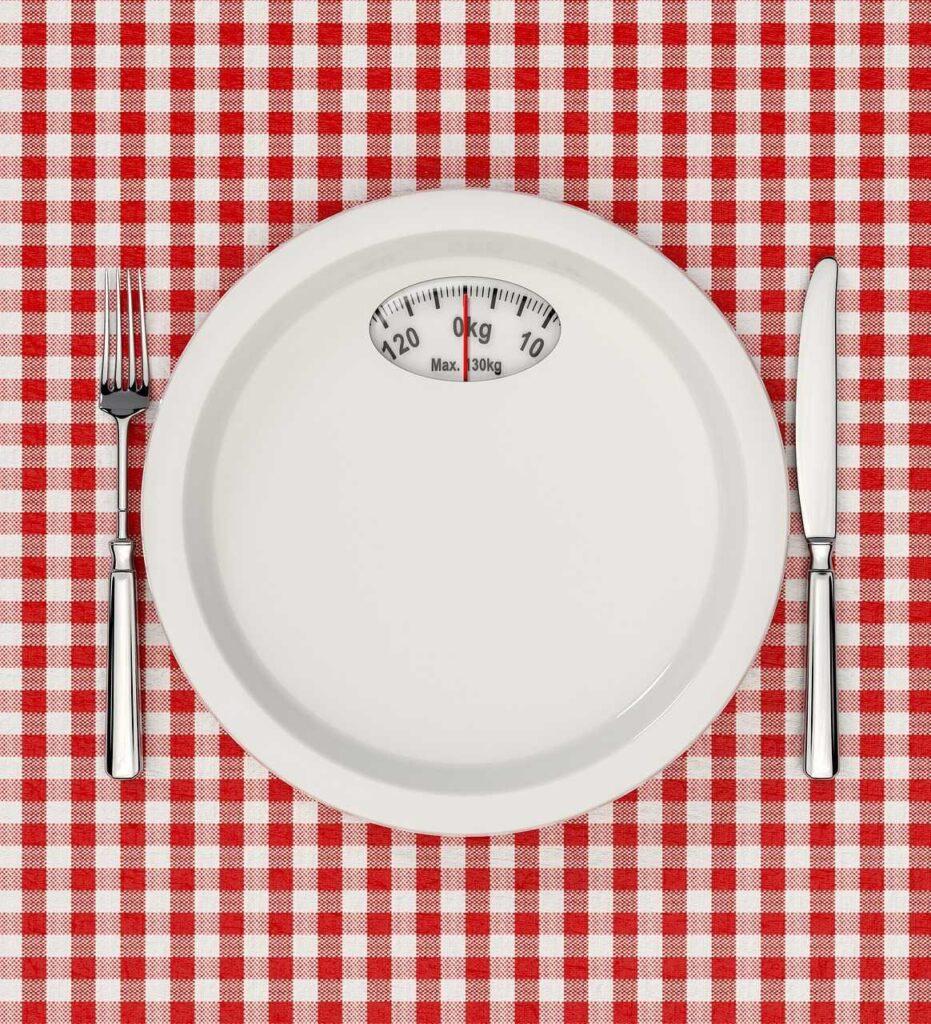

When you settle down for a meal, your hunger might override your concern for its nutritional balance. Understanding the fundamentals of macronutrients and their corresponding calorie content can assist you in crafting well-rounded meals.
Although calories aren’t an ingredient in your food, they play a crucial role in comprehending what you consume. Equipping yourself with accurate nutritional information will enable you to lead a healthier life.
What are Calories?
Calories represent the quantification of stored energy within substances, which can be liberated as heat when consumed. While a cup of frozen and cooked beans exhibit contrasting temperatures, they should possess an equivalent number of calories, indicating the same amount of stored energy.
Human bodies burn calories during various activities such as sleep or movement. In order to replenish the Calories you expend, you either need to consume food or tap your stored fuel reserves, which primarily consist of fats.
Calories and Health
The term “calorie” on food labels is an abbreviation for “kilocalorie.” A kilocalorie represents the energy required to increase the temperature of one kilogram of water by one degree Celsius.
For your body to function optimally, it requires energy derived from calories. This energy is essential for the proper functioning of various bodily processes. Maintaining a stable weight involves consuming and expanding an equal number of calories. It’s crucial to consider not just the calories themselves but also the specific source of those calories.
When the calories you consume through food and drinks align with the calories your body utilizes, your weight tends to remain relatively constant. However, an imbalance between the calories you consume and the calories your body expends can lead to changes in body weight.

Factors that Affect Calorie Needs
The amount of calories you should consume depends on various factors such as your weight, life stage, and activity level. For instance, if you aim to lose, gain, or maintain your current weight, these factors play a crucial role in determining your calorie intake.
While the above factors can be helpful when determining your daily caloric intake, additional factors such as lean body and basal metabolic rate help you achieve a higher level of accuracy.
Activity Level
Raising your activity level directly impacts the number of calories you should consume to sustain your weight. Comparing individuals of the same weight, age, and gender, an active person typically requires an additional 500 to 1,000 calories per day compared to someone who leads a sedentary lifestyle.
Sedentary individuals engage only in activities necessary for their daily routine. Active individuals undertake supplementary activities that expend similar energy each day.
Basal Metabolic rate
The basal metabolic rate (BMR) represents the energy utilized by the body for essential bodily functions, excluding physical activities such as exercise. It encompasses processes like circulation, digestion, temperature regulation, respiration, and cell construction.
BMR accounts for approximately two-thirds of the total daily calorie expenditure. Essentially, your BMR corresponds to the calories required to sustain your life. Genetic factors influence and contribute to the variation in BMR among individuals.
Some individuals are fortunate to have a higher BMR, while others have a slower rate. BMR reaches its lowest point during sleep as the body is not actively engaged in digestion.
Lean Body Mass
Determining your caloric needs accurately can be achieved by assessing lean body mass (LBM). Your LBM plays a significant role in determining your Basal Metabolic Rate (BMR). You need to differentiate your lean body components from your fat stores to calculate your LBM.
Active tissues like muscles demand a higher caloric intake to function optimally. Additionally, factors such as age and gender influence your metabolic rate, thereby affecting your daily caloric requirements.
Age
As we age, our bodies tend to replace muscle with fat, decreasing calorie-burning capacity. However, it is possible to maintain and even build muscle mass by staying physically active and engaging in muscle-strengthening exercises.
Recent studies focusing on older adults have demonstrated that there is always time to build muscle, regardless of age. Conversely, older individuals tend to have a slower metabolic rate than younger ones. Moreover, senior citizens typically engage in fewer daily physical activities, further influencing their caloric needs.
Gender
When comparing individuals of the same size and age, males generally possess approximately 10% to 20% more muscle mass than females. This disparity in muscle composition leads to a higher calorie-burning capacity for muscle compared to fat.
Consequently, men typically have calorie requirements that are approximately 5% to 10% higher than women. It is important to note that women experience exceptions to this general rule during pregnancy and breastfeeding.
Body Weight and Size
An individual’s shape and size influence body composition and metabolism. The ratio of muscle to body fat significantly determines the number of calories a person needs.
People with a higher muscle-to-fat ratio tend to have a faster metabolism as muscle tissues require more energy than fat. Individuals with more body fat and less muscle typically have a slower metabolism, making them more prone to fat accumulation. Those who are tall and slim often have a naturally higher metabolism compared to others.

How to Count Calories
Counting calories is an effective method to achieve weight loss goals, weight gain, or weight maintenance. Accurately tracking calorie intake can pose a challenge, but there are practical guidelines that can provide a clearer understanding of daily calorie consumption. These tips prove valuable in gaining insight into one’s calorie intake regularly.
If your goal is to shed around 10 pounds within ten weeks, which translates to a weight loss of one pound per week, here’s how you can calculate your caloric intake:
First, note that approximately 3,500 calories are equivalent to one pound of body fat.
- Decrease your daily calorie intake by 500
- Boost your exercise routine to burn 500 extra calories per day
- Combine both approaches by reducing your calorie consumption by 250 and increasing your exercise to burn an additional 250 calories per day
Reasons to Consider Counting Calories
Counting calories can be a valuable strategy for individuals to manage their energy balance effectively and achieve specific body composition objectives. Although maintaining weight through intuitive eating can be straightforward, altering one’s body weight to reduce fat or increase muscle mass is a more demanding endeavor.
For individuals who have previously gone through dieting, losing touch with their body’s natural signals of hunger and fullness is common. This can lead to chronic under-eating and inadequate nourishment. Hence counting calories comes in handy.
It’s essential to avoid excessively cutting down on calories as it can have adverse side effects on your health. Counting calories helps to alleviate some of the uncertainty and stress associated with determining appropriate portion sizes.
However, calorie counting is not suitable for everyone. If it starts to impose restrictions or generate negative emotions toward food, it is advisable to discontinue and seek guidance from a healthcare professional.
Ways to Cut Calories
Regarding weight loss, regardless of the diet you choose, the fundamental principle remains the same: you must burn more calories than you consume daily. For individuals dealing with overweight issues, a recommended starting point is to reduce calorie intake by approximately 500 calories per day.
Below are tips for cutting calories:
Engage in Morning Exercise
Engaging in morning exercise offers several benefits for women, as discovered by researchers at Brigham Young University. One significant finding is that people who work out in the morning experience a decrease in their appetite and increase their overall physical activity throughout the day.
However, the appetite-reducing effect is temporary and lasts only until the body temperature returns to normal after exercise. Nevertheless, morning exercise has a positive impact on daily movement levels.
It is recommended to incorporate four to five short bursts of activity throughout the day to achieve optimal results. Simple actions like taking the stairs contribute to this increased activity.
Boost Your Protein Intake
Incorporating protein into your snacks and meals can positively impact your eating habits in multiple ways. Protein takes longer to digest than carbohydrates.
This longer digestion process leads to a 20% increase in metabolism as your body works to break down protein. As a result, you feel fuller faster and stay satisfied longer. You can have some simple additions to your meals to achieve these benefits without feeling like you’re on a restrictive diet.
Decrease Portion Sizes
Opting for smaller portions during meals is a clever approach to achieving a calorie deficit naturally. It is advisable to begin gradually, reducing small amounts of food from your meals.
One effective method for decreasing the amount of food you consume is to opt for a smaller dinner plate. Using a smaller plate during dinner instinctively results in reduced portion sizes.
Reduce High-Calorie Beverage
Consuming high-calorie beverages can easily contribute to excessive calorie consumption. In particular, beverages that are rich in sugar add unnecessary calories to your diet without offering much nutritional value or a sense of satiety.
Additionally, opting to drink your calories instead of consuming them through solid foods can produce a surplus of calories. The consumption of sugary drinks has been linked to weight gain, regardless of one’s level of physical activity. This suggests that more than just exercise may be needed to compensate for the calorie intake from sugary drinks effectively.
Increase Your Fiber Intake
Incorporating ample amounts of whole grains, vegetables, legumes, and fruits into your diet is an excellent strategy to experience satiety while consuming fewer calories.
These nutritious foods are rich in antioxidants and phytochemicals, proven to reduce the chances of developing heart disease and cancer.
Saute Your Meals
Sauteing offers a healthier approach to food preparation by utilizing a shallow pan and a modest amount of cooking oil. This method significantly reduces the need for excessive oil, making it a more calorie-conscious choice.
By transitioning to sautéing, you reduce calorie intake and support your overall well-being.























You must be logged in to post a comment Login